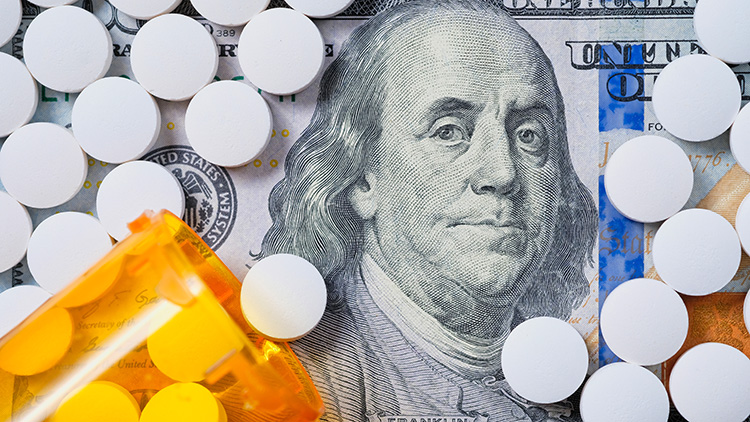
Angle

Johnson & Johnson Ordered to Pay $572 Million in Opioid Litigation
- Legal Operations
- 5 Mins
For years, the number of people becoming addicted to opioid-based pharmaceuticals has rapidly increased. People who are chronic users of opioid drugs can experience severe side effects and are at a greater risk of overdose related death. The Centers for Disease Control and Prevention estimates that opioids account for 68% all drug overdose deaths, and in 2017, the U.S. Department of Health and Human Services declared a public health emergency for America’s opioid epidemic. Several states, individuals, and other government divisions have filed lawsuits against various entities involved in the creation and sale of prescription, opioid-based painkillers.
The Opioid Crisis Legal Battle
On August 26, an Oklahoma judge rendered a landmark decision against Johnson & Johnson Inc. for contributing to the opioid crisis through manufacturing, advertising, and sale of the company’s fentanyl patch. The state filed suit claiming that a division of Johnson & Johnson (Janssen Pharmaceuticals) and other pharmaceutical companies massively contributed to the national opioid crisis by using aggressive and deceptive marketing campaigns that promoted opioid painkillers as safe, long-term treatment options for individuals with chronic pain, while minimizing the addiction risks. The prescribing doctors, patients, and the public were allegedly the target of this subversive conduct. The judge found in favor of the state and entered a $572 million judgment based on “public nuisance theory.” The legal theory suggests that something is considered a “public nuisance” when it “unreasonably interferes with a general public right.” The other two defendants, Purdue Pharma and Teva Pharmaceuticals, settled their claims for $355 million with no admission of guilt.
Opioid Manufacturer Liability
The Johnson and Johnson ruling is significant because it is the first ruling to place liability on an opioid manufacturer. However, it is difficult to predict how this case will affect current and future opioid litigation. Some possible repercussions of this decision include:
-
Precedent: Primarily, this decision undoubtedly provides other cases with precedent. There is currently multidistrict litigation in Ohio that consolidates almost 2,000 cases set to begin in October, as well as about 400 other pending state cases. Johnson & Johnson and Purdue Pharmaceuticals (OxyContin manufacturer) are both defendants in many of these cases. The Oklahoma decision provides good foundations that may help the Ohio multidistrict litigation reach settlement before trial or verdicts. While plaintiffs may opt to use the public nuisance argument, this argument is not a slam-dunk theory, nor should it be the main legal strategy. Public nuisance arguments are difficult to make, are rarely used in cases involving social issues, and are often overturned on appeal. Other potential legal theories that claimants may use is consumer fraud claims, false advertising, and misrepresentation.
-
Settlement: This case will likely encourage a rush of settlements in order to avoid liability rulings and potentially heavy fines. By settling, companies can also show the public that they acknowledge the seriousness of the opioid epidemic and will work to change their marketing and distribution tactics in order to help combat this issue. Purdue has already been advocating for global resolution of these cases and is tactically using these cases to their advantage by deploying rebranding schemes, refocusing their marketing efforts, and supporting the stop of opioid abuse across the nation.
-
More lawsuits: Due to the confidence boost, this decision provides to affected parties, another way the Johnson and Johnson case could play out is there could be more multidistrict litigation suits, class actions, civil litigation, or even criminal cases. However, criminal liability claims is a stretch.
Conclusion
Johnson & Johnson has publicly announced their intent to appeal the Oklahoma ruling, arguing that (1) it did not cause the opioid crisis and (2) that their product accounted for less than 1 percent of opioids present in the Oklahoma market. Since the appeals court may overturn this case, some may wonder why the judge even relied on a public nuisance theory. A possible reason for deference to the public nuisance theory is that none of the legal theories available creates a strong argument. The opioids drugs are not a defective product, which is a needed component to make a liability claim. Furthermore, defendants can argue that liability should fall on the prescribing doctors and patients who abuse the drugs. However, the Oklahoma decision sends a message that courts are not afraid to rely on unorthodox theories to create awareness and help curb the opioid crisis. If all parties work together, the next big question will be how to distribute settlement money in order to compensate victims or make a significant change, while still maintaining the livelihood of opioid manufacturing companies? If you found this blog informative, you may enjoy reading Playing "The Blame Game": Data Breach Liability in Organizations or The Epiq Angle Blog.
The contents of this article are intended to convey general information only and not to provide legal advice or opinions.
